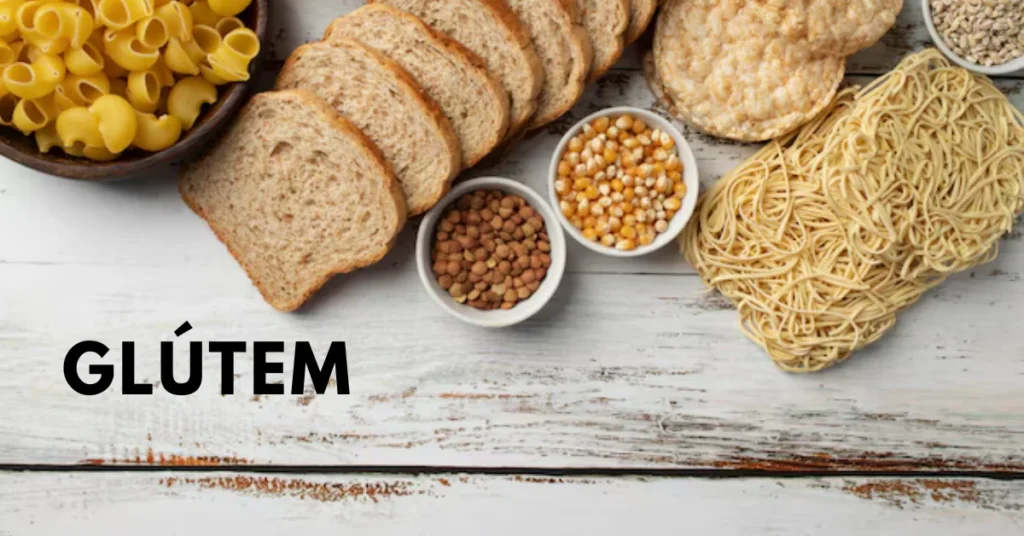Introduction to Glútem
Glútem has become a buzzword in recent years, often surrounded by both admiration and skepticism. For many, it’s a dietary villain; for others, it’s the secret to delicious baked goods. But what exactly is glútem? It plays a vital role in our culinary world, particularly found in grains like wheat, barley, and rye. As we dive deeper into this intriguing topic, you’ll discover its benefits and how you can incorporate it into your meals—plus some delightful recipes that showcase its versatility. Whether you’re already a fan or just curious about glútem’s nutritional value, there’s something here for everyone!
What is Glútem and Where is it Found?
Glútem is a protein complex primarily found in wheat, barley, and rye. It plays a vital role in giving bread its chewy texture and elasticity. When flour mixes with water, glútem forms stretchy networks that trap air bubbles during baking.
You’ll find glútem in many everyday foods. Breads, pastas, cereals, and baked goods are common sources. Processed products often contain hidden glútem as well.
Beyond grains, some sauces and even beverages may include this protein due to its thickening properties. It’s essential to read labels carefully if you’re monitoring your intake of glútem or exploring dietary choices.
Understanding where glútem hides can help you make informed decisions about what goes into your meals. This awareness empowers those who enjoy it while aiding others who choose to avoid it for health reasons.
The Benefits of Glútem
Glútem is often misunderstood, but it plays a vital role in our diets. One of its main benefits is providing essential proteins that help build and repair tissues in the body. This makes glútem particularly valuable for those engaged in physical activities.
Another advantage of glútem-rich foods is their ability to offer energy. Carbohydrates found in wheat, barley, and rye are excellent fuel sources for your daily tasks or exercise routines.
Moreover, glútem contributes to better digestion. It helps maintain gut health by promoting a balanced intestinal flora. Foods containing glútem can also keep you feeling full longer due to their fiber content.
Including glútem in your diet can enhance nutrient absorption as well. The proteins interact with vitamins and minerals, making them more accessible to the body’s systems. Its multifaceted benefits make it an important component of many traditional diets worldwide.
Common Misconceptions about Glútem
Many people associate glútem solely with negative health effects. This misconception largely stems from the gluten-free trend that has gained popularity in recent years. While some individuals do have sensitivities, it doesn’t mean everyone must avoid it.
Another myth is that glútems cause weight gain. In truth, it’s not the presence of glútems itself but overall diet and lifestyle factors that contribute to this issue. Moderation is key.
Moreover, there’s a belief that all grains containing glútem are unhealthy. Whole grains like wheat, barley, and rye offer essential nutrients and fiber beneficial for digestive health.
Many think gluten intolerance is simply a fad or an exaggeration. For those diagnosed with celiac disease or non-celiac gluten sensitivity, even small amounts can lead to serious health issues. Understanding these nuances can help clarify misconceptions surrounding this complex protein.
How to Incorporate Glútem Into Your Diet
Embracing glútems in your meals can be both enjoyable and beneficial. Start by integrating whole grains such as wheat, barley, and rye into your breakfast routine. Consider oatmeal topped with fruits or a hearty bowl of granola for a nutritious start.
For lunch, sandwiches made with whole grain bread are delightful options. Add fresh veggies and lean protein to amplify flavor and nutrition.
Dinner provides opportunities to explore pasta dishes or risottos featuring barley. These versatile ingredients lend texture to your meals while delivering essential nutrients.
Snacks also shine when you choose crackers or baked goods made from whole grains. Experimenting with different recipes keeps things exciting while maximizing the benefits of glútem in every bite!
Delicious Recipes Using Glútem
When it comes to cooking with glútems, the possibilities are endless. One delightful option is homemade pasta. Using flour from wheat or rye, you can create fresh noodles that elevate any dish.
Another favorite is classic sourdough bread. The fermentation process enhances flavor and texture while retaining all those beneficial properties of glútems.
For a savory treat, try making pizza dough from barley flour. It yields a crisp crust that’s perfect for loading up with your favorite toppings.
If you’re looking for something sweet, consider baking some soft pretzels. They’re chewy on the outside and fluffy inside—an irresistible snack!
Don’t overlook pancakes made with whole wheat flour. A stack topped with fruits makes breakfast feel like a special occasion every time!
Alternatives for Those with Gluten Intolerance or Celiac Disease
For those with gluten intolerance or celiac disease, finding safe alternatives is essential. Fortunately, the market offers a wealth of options.
Quinoa stands out as a fantastic substitute. Packed with protein and fiber, it serves well in salads, bowls, or as a side dish.
Rice is another versatile option. Brown rice adds more nutrients than white rice while being easy to prepare.
Don’t overlook legumes like lentils and chickpeas. They are nourishing and can be used in various dishes from soups to stews.
Nut flours such as almond or coconut flour provide great choices for baking too. They add distinctive flavors while keeping your meals gluten-free.
Explore gluten-free grains like millet and amaranth to diversify your diet even further! Each alternative brings unique textures and tastes that keep meals exciting without compromising health.
Conclusion: Embracing the Nutritional Value of Glútem
Understanding the nutritional value of glútem can reshape how we approach our diets. This protein, found predominantly in wheat, barley, and rye, offers numerous benefits that many may overlook. From enhancing digestive health to providing energy through complex carbohydrates, glútem plays a crucial role in various culinary traditions.
While some people harbor misconceptions about glútems being harmful universally, it is essential to differentiate between those with gluten intolerance or celiac disease and individuals who can enjoy it without issues. For the latter group, incorporating glútem into meals opens up a world of possibilities—from artisanal breads to hearty pastas.
For those avoiding glútems due to dietary restrictions, there are plenty of alternatives available that offer similar textures and flavors without compromising on nutrition. As food options continue expanding across markets globally, embracing these changes ensures everyone can find satisfying solutions suited for their needs.
Recognizing the importance of glútems allow us to appreciate its place in nutrition while understanding individual health variations. By making informed choices regarding consumption habits and exploring new recipes featuring this versatile protein source or suitable substitutes as needed, each person can foster a balanced relationship with their diet. Enjoying wholesome foods should be at the forefront—whether they contain glútem or not!
FAQs
What is “glútem”?
Glútem is a protein complex found primarily in wheat, barley, and rye. It gives bread its chewy texture and elasticity, forming stretchy networks that trap air during baking.
What are the health benefits of glútem?
Glútem provides essential proteins that support tissue repair, offers energy from carbohydrates, aids digestion through fiber, and enhances nutrient absorption in the body.
Are all foods with glútem unhealthy?
Not at all! Whole grains like wheat, barley, and rye are rich in nutrients and fiber, making them beneficial for digestive health and overall well-being.
Who should avoid glútem?
Individuals with gluten intolerance or celiac disease should avoid glútem, as even small amounts can trigger serious health issues. It’s important for these individuals to find safe alternatives.
How can I incorporate glútem into my diet?
You can add glútem to your meals by choosing whole grain breads, pasta, or incorporating grains like barley and rye into soups, salads, and baked goods for added nutrition and texture.







